Across L.A., murals are a testament to Nipsey Hussle’s legacy
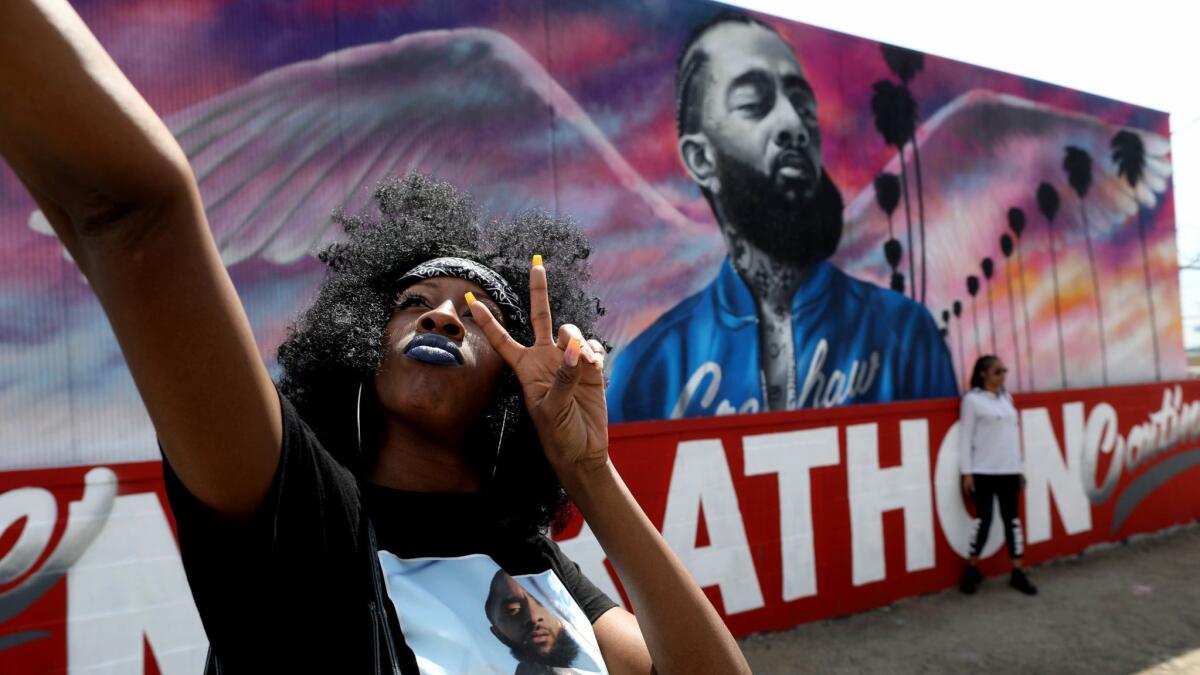
- Share via
Months after his death in March, Nipsey Hussle’s influence pulses through the city — in alleys, on the fronts and sides of buildings, along busy highways and streets, on billboards and basketball courts, in galleries and breweries.
In rich, vibrant colors, his face is amplified on dozens of murals and public art pieces, big and small, that have popped up around South L.A, Boyle Heights, Venice, Mid-City and downtown L.A.
The murals are a testament that the legacy of Hussle, born Ermias Asghedom, continues beyond his music and the imprint he left in South Los Angeles as an activist, entrepreneur and community member.
For many, the art is a way to process grief: With colors, his breath is restored.
Hussle, 33, was fatally shot outside his clothing store March 31 in what police have described as a personal dispute. Two other men were wounded. Another fledgling rapper, Eric Holder, 29, was indicted on one count of murder, two counts of attempted murder and other charges. He has pleaded not guilty.
Hussle’s image now colors the city— painted in blues and yellows, sometimes carrying sunset-hued angel wings.
In an alley next to his Marathon Clothing store, two giant murals of him decorate the brick walls. On one is a cloudy background with Hussle’s side profile in the foreground. His head is tilted down, eyes closed, a halo floating above. In the middle is the logo of his label, All Money In Records. The top right corner has a painting of the record label’s co-founder Stephen “Fatts” Donelson, who was killed by gunfire in 2017, less than a mile from where Hussle was shot to death.
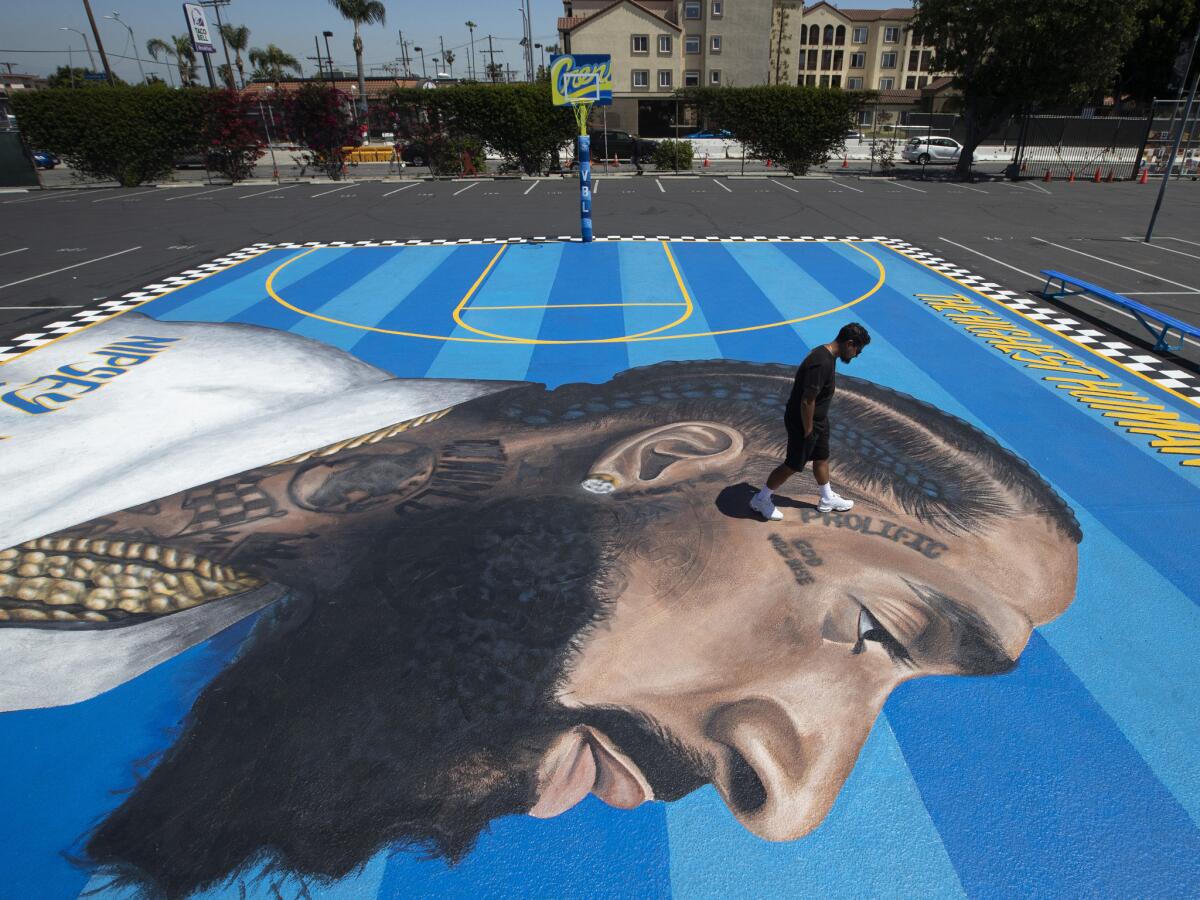
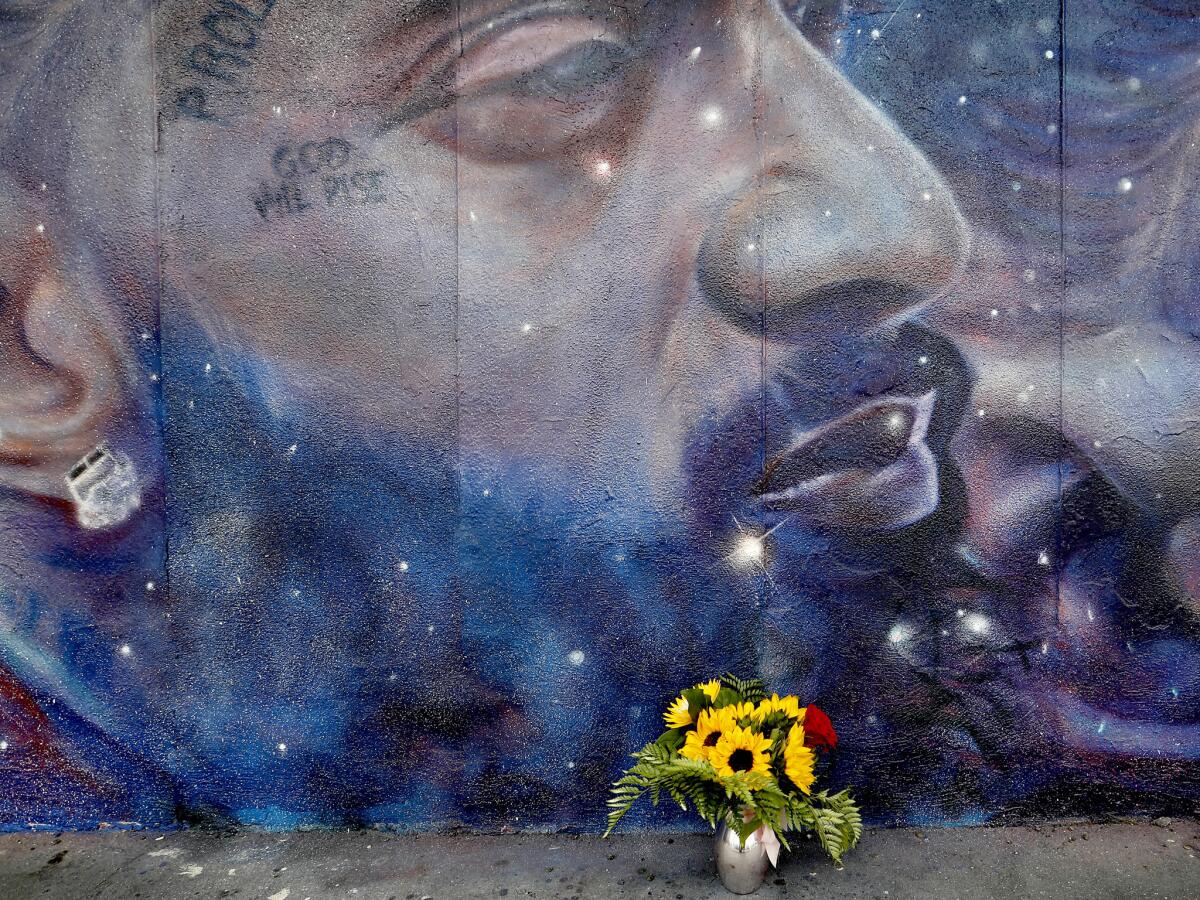
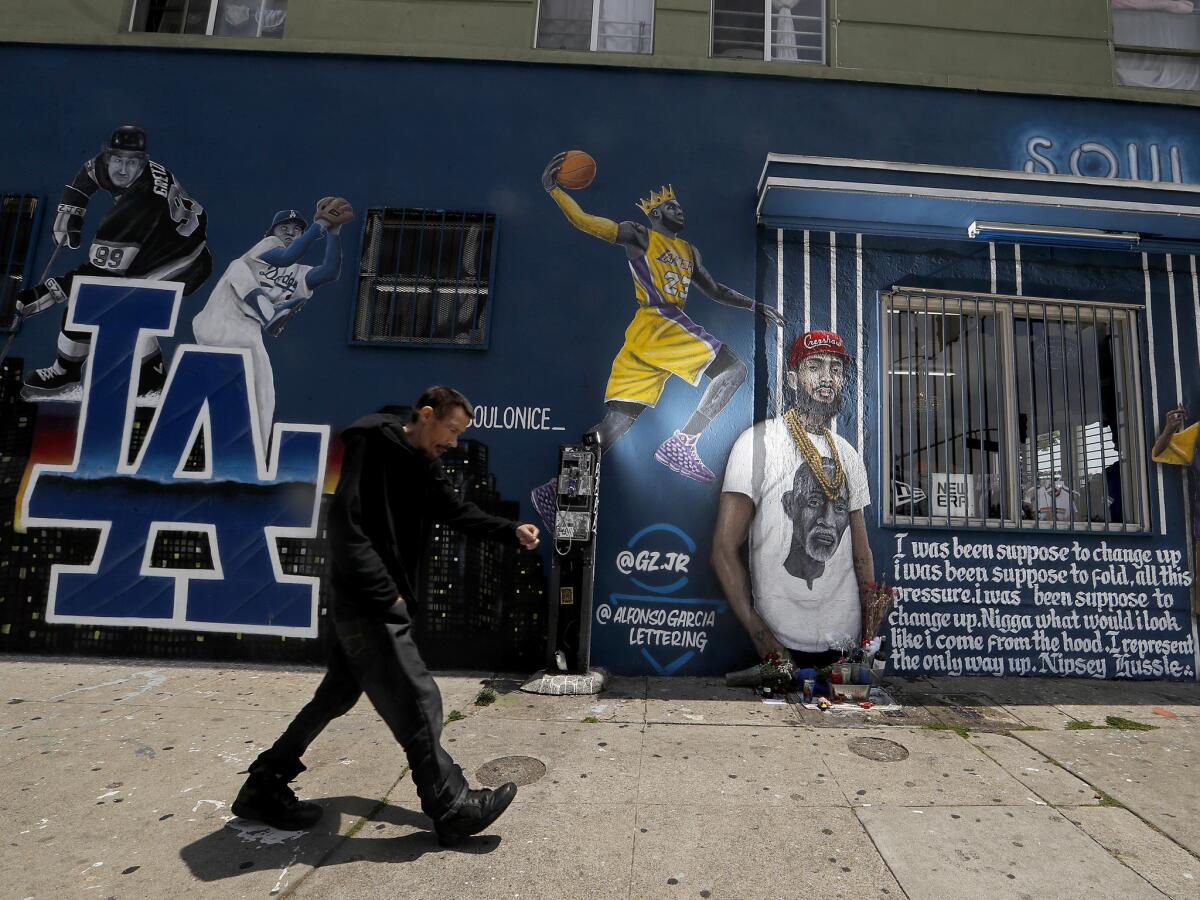
It’s a piece by Bobby Z. Rodriguez, 30, of Long Beach. The day after Hussle’s death, the muralist and graphic designer approached a Marathon Clothing store manager to ask whether he could honor the slain rapper through his art. He got the OK and started right away.
“I wanted to bring calm…. My plan was for it to de-escalate everything,” said Rodriguez. “Art brings a sense of calm, a visual representation of someone who just passed, and to pay respect.”
When a stampede erupted outside Hussle’s store April 1 during a vigil, Rodriguez was on site with paint and a ladder. He hasn’t finished the piece, though. Every time he’s there to work, he’s distracted by mural visitors asking for photos.
On a recent cloudy Friday morning, half a dozen people stood in the alley taking pictures of Rodriguez’s mural and the one across the way by Danny Mateo, a tattoo artist.
Danielle Brooks, a 26-year-old from Brooklyn, was in town for her master’s graduation from USC, so she and a friend decided to make a trip to South L.A. to see murals of Hussle.
“We made it a mission to come out here,” said Brooks. “I think [the murals] are beautiful. It gives the place an aesthetic.”
L.A.’s history with murals dates to the 1960s and ’70s in Venice and South L.A., where people painted public art pieces for political or personal reasons, said Eric Bjorgum, president of the city’s Mural Conservancy. “That’s really when the city’s identity came together, with murals, because people realized they were doing them as public art … and it resulted in murals all over the city.”
When L.A.’s mural moratorium was lifted in 2013, allowing for public artworks and murals to exist with permits, people began embracing the work rather than treating it like graffiti “or signs that had to be covered up,” Bjorgum said. But some public art advocates complained of a complicated mural application process, resulting in murals popping up without proper registration. The same is true today.
Now, like then, “the murals found throughout the city reflect the diverse cultural identities, individuals, histories, and issues important to the residents of Los Angeles,” said Felicia Filer, a director for the city’s Department of Cultural Affairs.
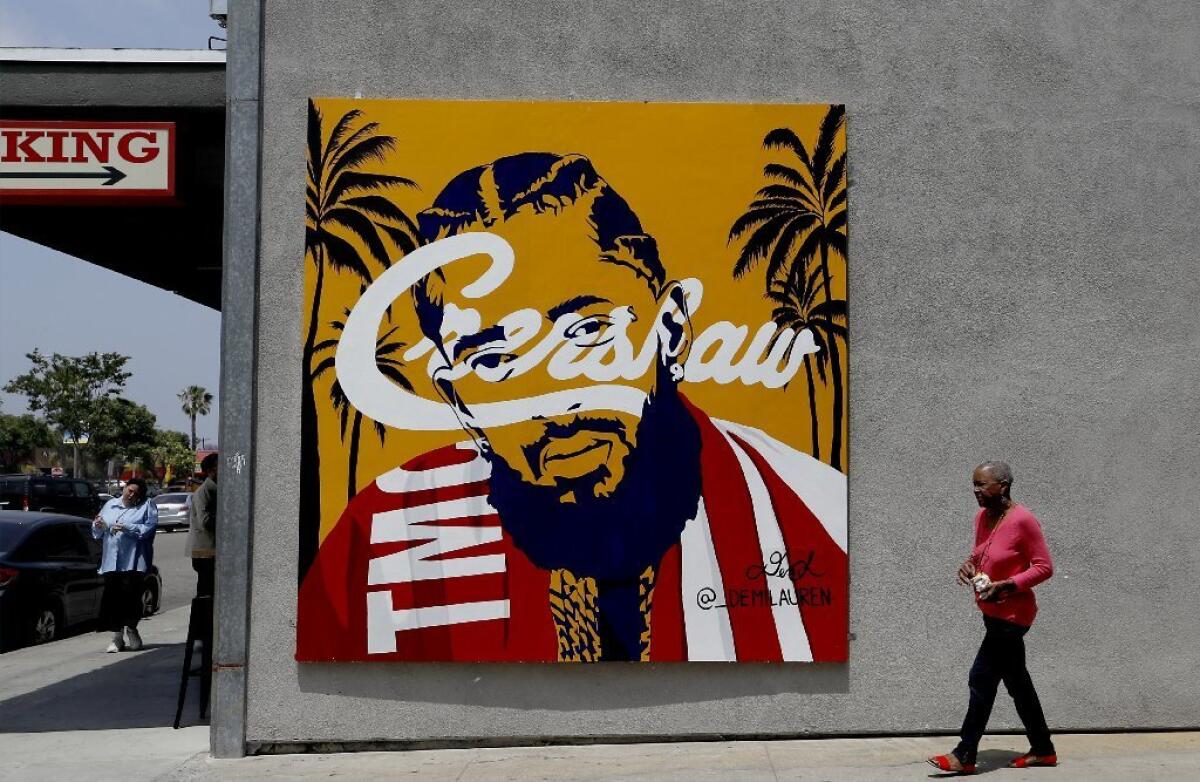
Brothers Markelor and Casimir Berthoumieux and their friend Tanner Morgan were also near the Marathon store admiring Rodriguez’s mural. The trio from Reno, Nev., were in town exploring housing options and learned about the South L.A. murals honoring Hussle through social media.
Markelor has been a fan of the slain rapper’s music since 2010, but it’s what Hussle “did for the community, what he did for kids” that made the 24-year-old admire him. Hussle was providing resources the community didn’t have and, in doing so, helping the area’s kids beat the statistics, Markelor said.
“Hussle was trying to create unity,” Casimir, 22, said. “People from all walks of life came together because of him.”
A few steps away, on one of the outer walls of the Fatburger that Hussle frequented, is a cosmic mural by Enkone, a local artist. The rapper, with his distinctive face tattoos “Prolific” and “God will rise,” looks contemplatively into the distance. In the mural’s second image, his face is zoomed in and faint, and appears to be fading into a constellation of stars.
The mural was painted about a month after Hussle’s death, and its presence has increased clientele, said Amber Rodriguez, one of the burger joint’s managers. “I think it’s amazing. It’s bringing in a lot of people from different states.” She recalled a man from New York who recently traveled to L.A. with 10 friends just to visit the Marathon Clothing store and see the murals memorializing the rapper.
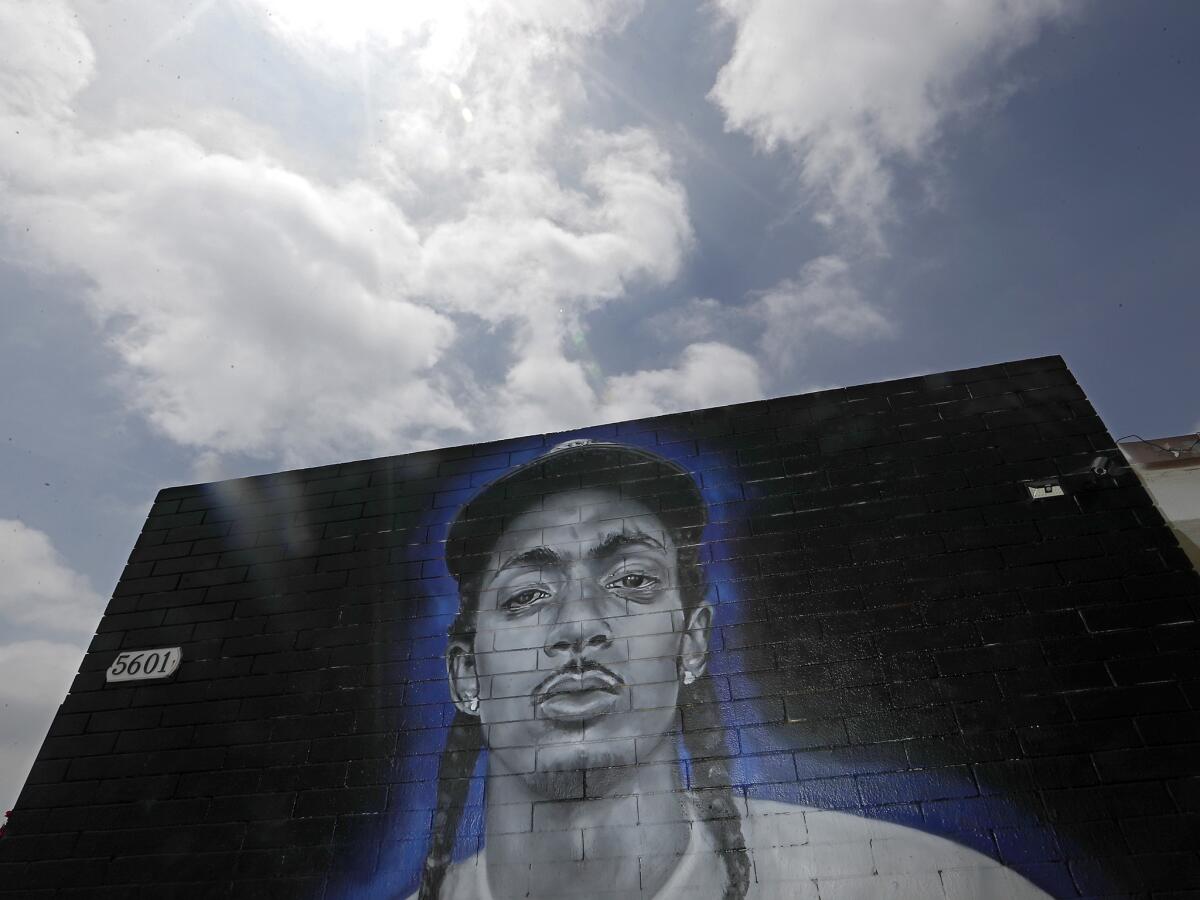
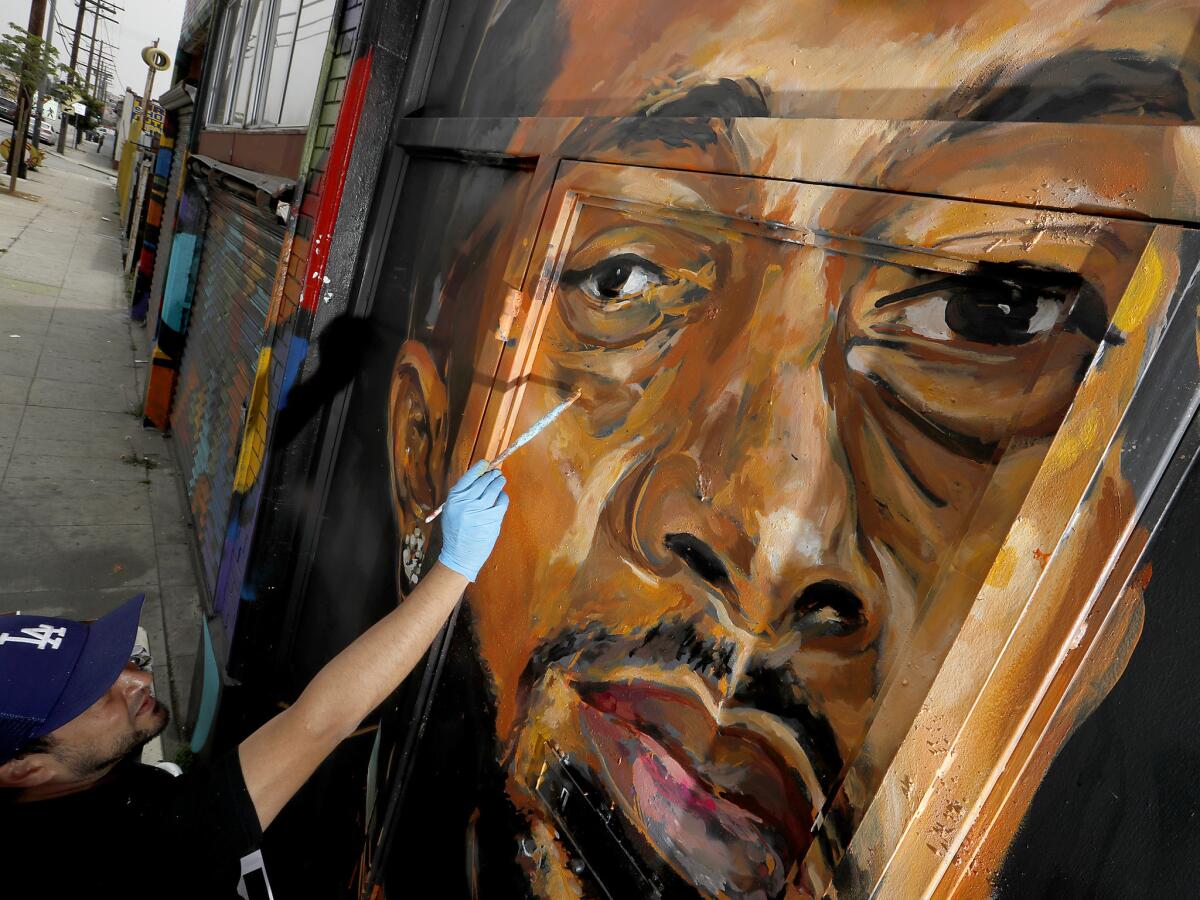
Hussle was trying to create unity. People from all walks of life came together because of him.
— Casimir Berthoumieux
Fatburger’s owner was close to Hussle, and she commissioned Enkone to paint the rapper, Rodriguez said. “She felt it was the best way to pay her respects.”
Danny Andrade has a mural outside his business too. The 36-year-old owner of Auto Tech Body Shop on Slauson Avenue, a few yards from the Marathon Clothing store, didn’t know Hussle too well, but he went to King/Drew Medical Magnet High School with the rapper’s brother, Samiel Asghedom. The two were good friends.
“I did the mural to support my friend Sam,” Andrade said. “I just did it for my buddy. … I felt so bad to see my friend so sad.”
Within days of Hussle’s death, he wanted to paint the exterior of his shop to honor the rapper. He found a couple of young artists “who were just looking for a wall to paint on,” and they got started on the project.
About a week and 60 hours of work later, the mural was complete. What was once a plain blue wall is now a large painting of Hussle gazing up at the clouds, Greek laurels and blue roses on either side of him. Above him floats a street sign that reads “Crenshaw,” and his name stretches in large letters beneath him, as if demanding to be seen. And it’s brought happiness to those who’ve observed it, Andrade said.
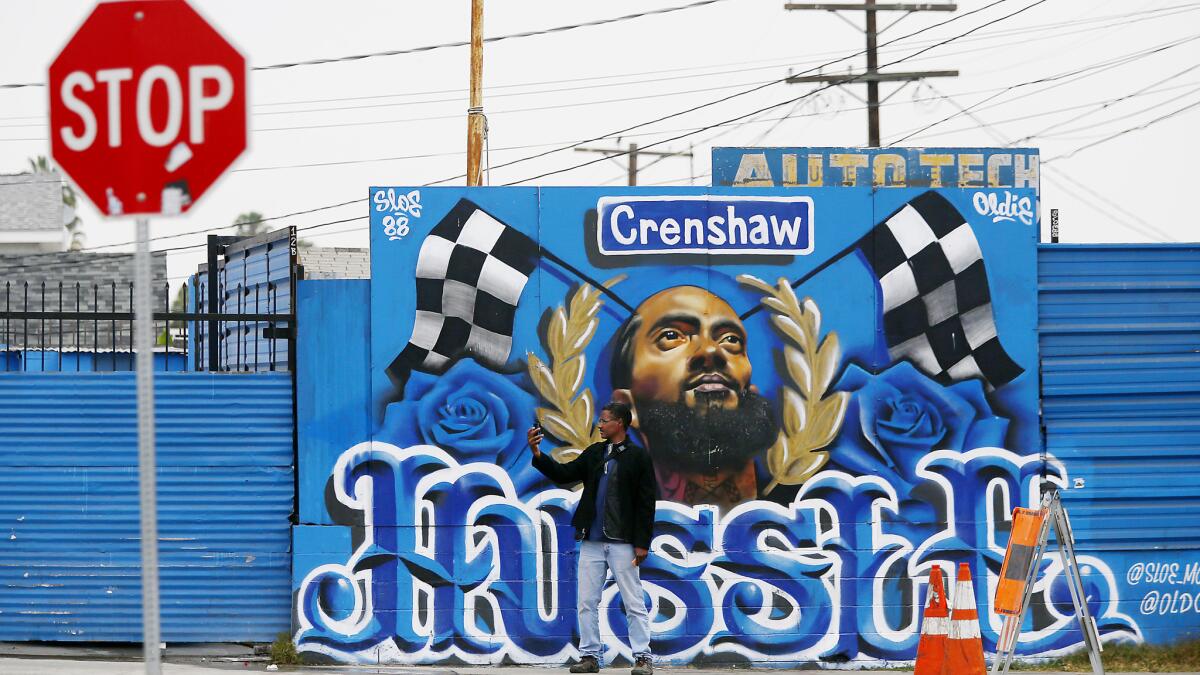
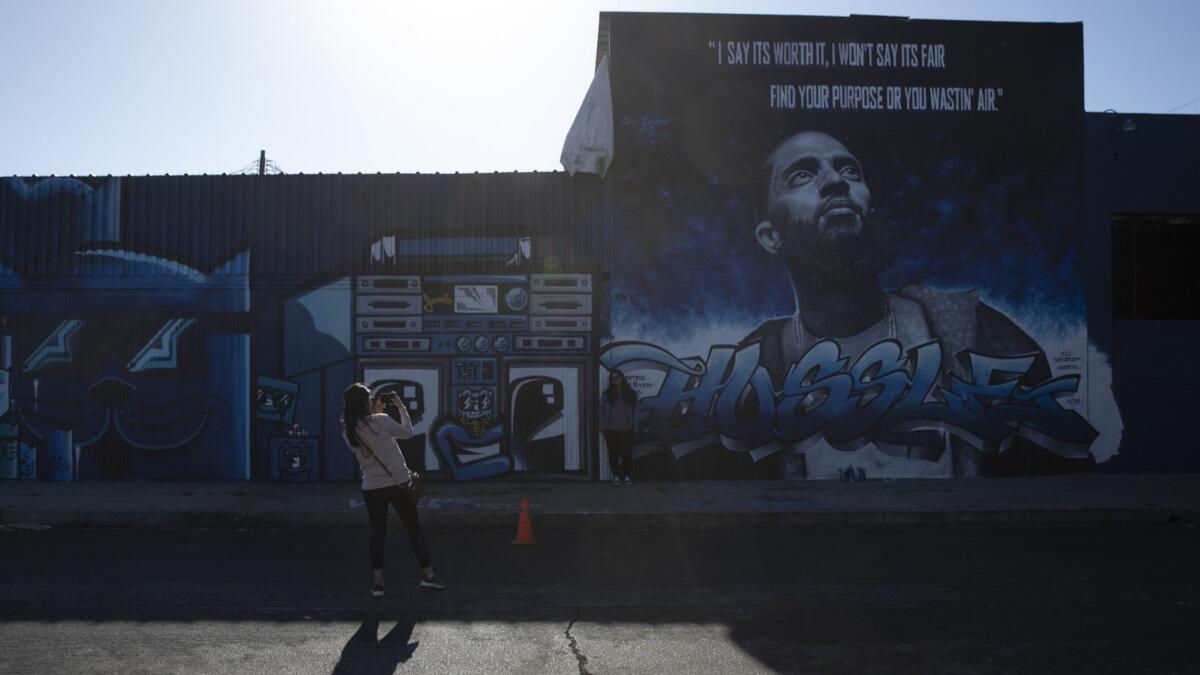
“Nip was like a second chance for all these people. He was an example of motivation and that, like, you can do this,” he said. “As long as I’m here, the mural’s gonna be up there.”
But not all have welcomed art of the South L.A. entrepreneur. Hussle was affiliated with the Rollin’ 60s Crips street gang and before his death was working to end the deadly rivalry with the Bloods gang. But Vanessa Prado, 27, had to white out the mural she painted of Hussle outside her Mid-City home “because it started becoming a safety issue for my parents,” she said.
Prado, a manager for a hair product company, said there’s tension between blue and red gangs in her neighborhood. “After I painted it people came up to me and told me that the color blue was not welcome in that area. … We started seeing people hanging out in the corner a little more, and my parents felt unsafe leaving the house.”
Still, others appreciated her efforts. While she painted the mural, friends and passersby approached her and talked about how Hussle’s death affected them. “People in the neighborhood, they were crying and very emotional about how they were feeling. It was a process of grieving for all of them,” she said.
Farther west, in Venice, Jules Muck celebrated Hussle in green. The “older than 40” artist known as Muck Rock illustrated the rapper as an alien, his face enclosed in a bubble with the word “FOREVER” below and several vine-like tentacles emanating from the sides and swirling at the tips.
Muck was vaguely familiar with the rapper’s music when he died, but she wanted to paint him “to give people comfort…. It’s been therapy for me, and I noticed how much it touches people,” said Muck, who has painted other notable figures like David Bowie after their deaths.
“I think there are some artists who cross the line from just being a musician…. Nipsey was more of a sage, and a humanitarian is what he was turning into…. He was trying to spread a good message and someone just took him away.”
Demi Lauren lives down the street from the Marathon Clothing store. The 26-year-old painted a canvas of Hussle, which stands on the outer side of Earle’s Restaurant in Leimert Park.
Lauren was first inspired by Hussle in high school when the rapper was just selling mixtapes. She’d see him often around the area.
“We got dealt the same deck of cards,” she said. “We came from nothing…. I wanted something more and something better, and seeing this guy make something out of nothing, that really inspired me.”
The graphic designer and event planner considered Hussle a teacher and someone who “was trying to make difference in the community and spread knowledge.”
His legacy, she said, will never be forgotten. “The marathon continues and we’ll live through him. He will forever be in all of our hearts.”
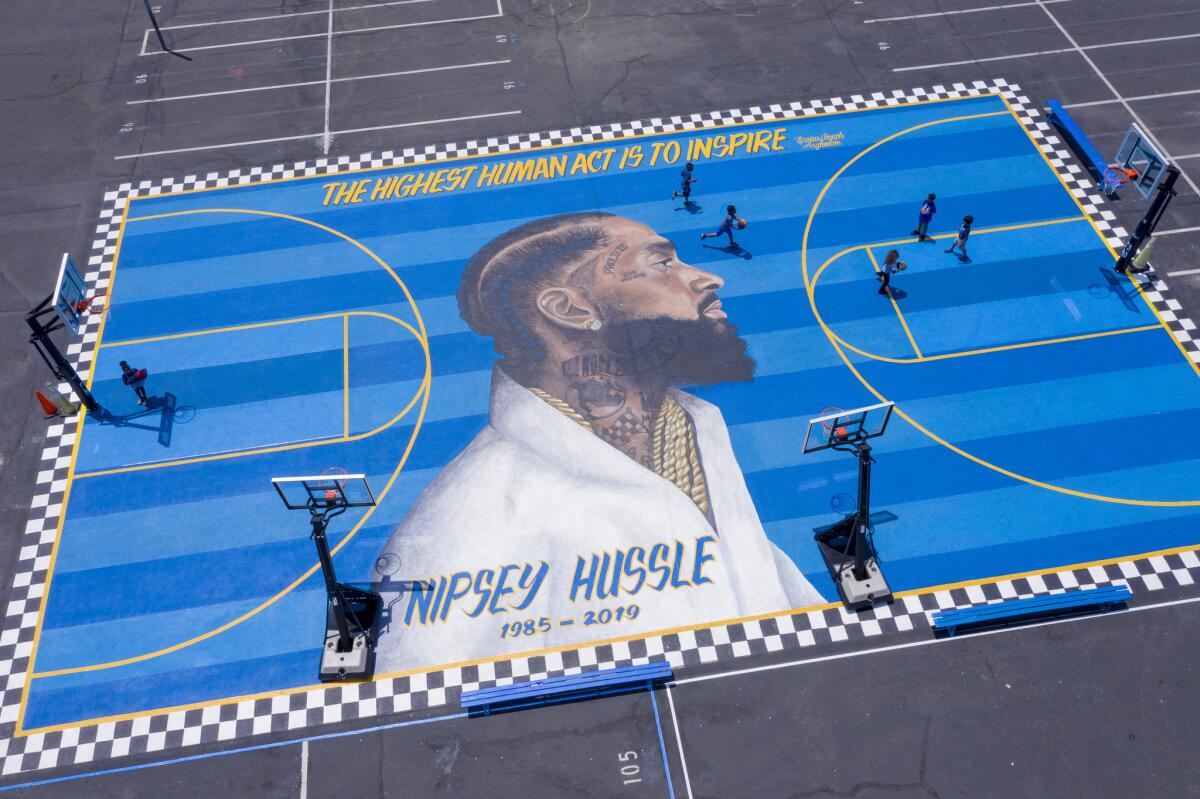
Twitter: DoranyPineda90
Sign up for Essential California
The most important California stories and recommendations in your inbox every morning.
You may occasionally receive promotional content from the Los Angeles Times.








